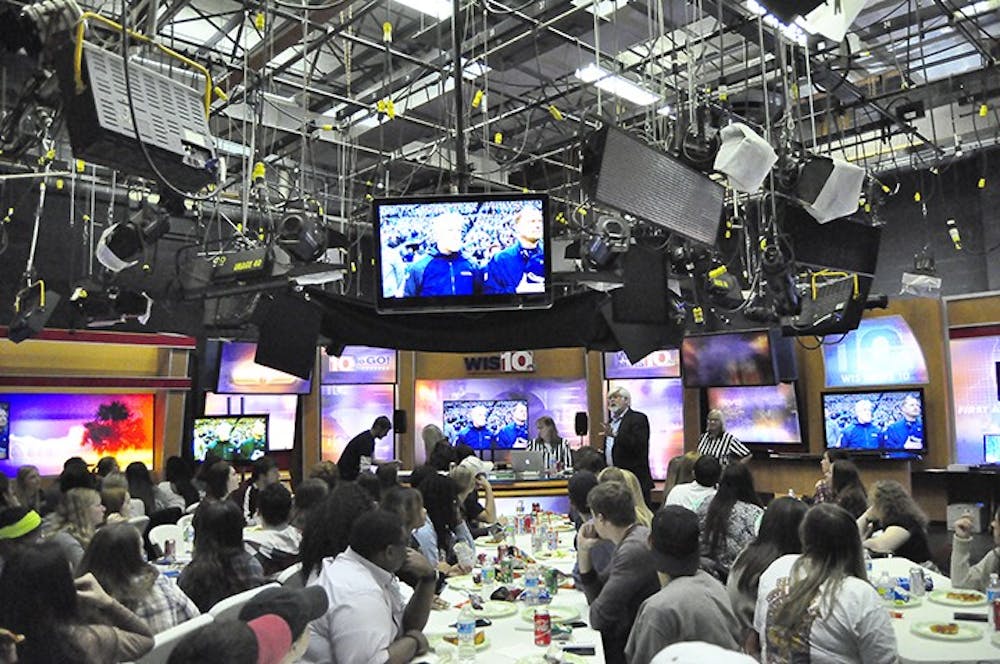On Super Bowl Sunday, 100 students’ voices swelled as they ate, laughed and waited for the big game to begin.
But they weren't in a bar, dorm or apartment.
“This is awesome," said Alex Grant, a third-year broadcast journalism student. "We’re sitting on the set of the WIS news station to watch the Super Bowl."
As a part of the Super Bowl of Advertising class offered by the College of Journalism and Mass Communications, students watch the game and pay close attention to the commercials, rating each based on likability, persuasiveness and brand identity.
The students were set up at fold out tables on the floor of the WIS-TV newsroom. Bonnie Drewniany and Glenda Alvarado, professors at USC’s School of Journalism and Mass Communications, sat at the news desk in referee uniforms, ready to delegate the Super Bowl Ad Poll.
Students voted for their favorite ads with iClickers, and seven large TVs were mounted throughout the room, so everyone had a clear view of the game.
Drewniany teaches the Super Bowl of Advertising class now, but she has recorded the big game in order to show the commercials to her students since the late 1980s. Her class looks at ways different groups are portrayed in advertising, different commercials' strategies and the evolution of creative tactics.
“The course explores how Super Bowl commercials reflect our society,” Drewniany said.
While analyzing the commercials gives students a look into the past, the class gathers for the Super Bowl for another reason: to select the No. 1 advertisement, the recipient of the Cocky Award.
The Cocky Award has been given out since 2004, one year after the class first began. As a recipient of the Cocky Award, the advertising team of the winning commercial is invited to USC to share how they went about creating the ad.
In addition to Drewniany and Alvarado, August “Augie” Grant, another professor at the School of Journalism and Mass Communications,lent a hand with the event, pausing the game to allow time for voting.
“It’s a real family effort by the J-School,” Grant said.
As the students studied commercials from past years, several have noticed a common theme.
“The trend seems to be that they’re really sexualized,” Leesa Delphia, a fourth-year advertising student, said. “That’s not something that I’d be interested in, but I bet a lot of the guys in the class will rate these higher than the girls will.”
Drewniany commented that some of the early-release commercials, like those of Microsoft, Toyota, McDonalds and Budweiser, portrayed more uplifting and empowering messages.
“The ads were a time capsule of our society,” Drewniany wrote. “The ads capture the spirit of the nation when we are at peace and at war. They mirror the economic climate during bull and bear markets. They showcase society’s evolving sense of humor. They reflect changes in the way minorities, men and women are portrayed. They chronicle new product introductions and new advertising campaigns. They reflect what’s in and what’s not.”

